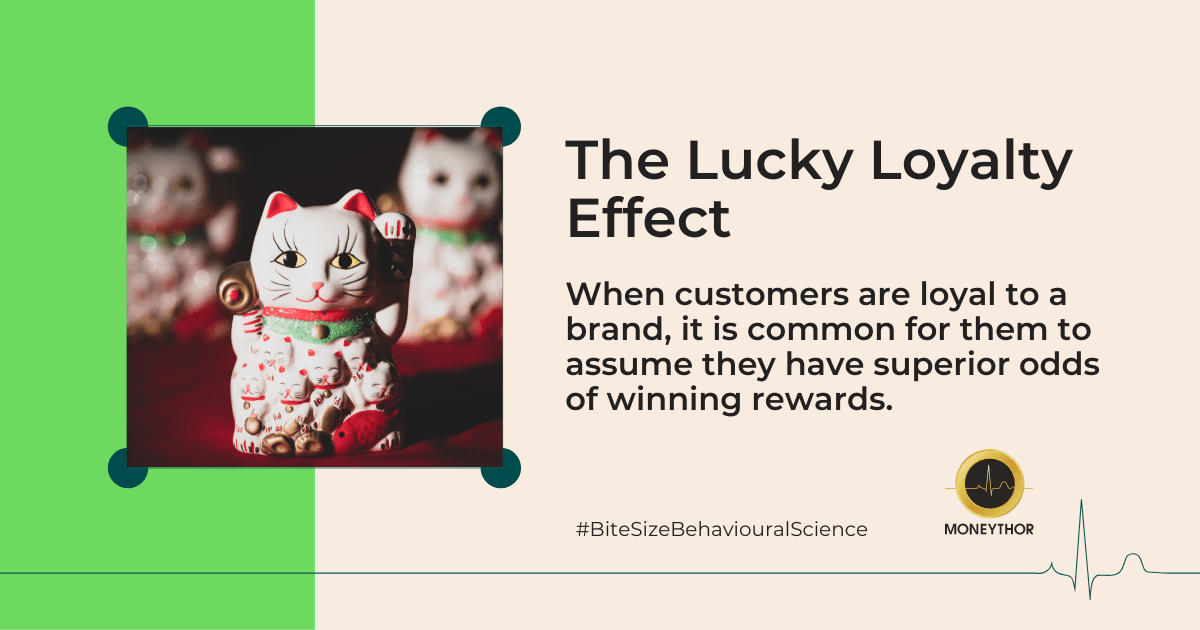When shopping at your favourite store (or online retailer, as of late), do you ever feel like the odds are skewed in your favour to win a competition or giveaway simply because you are a loyal patron?
It is common for customers who are loyal to a brand, product or company to frequently and erroneously assume that they have superior odds of winning a prize even though they’re told that the winners will be picked at random. This belief is a cognitive bias that practioners have called the lucky loyalty effect.
Why does this happen?
There is a direct correlation between the amount a consumer invests in a brand and the entitlement they feel towards the chances of them winning a reward being offered by said brands, even when the outcome is known to be random.
However, it is important to note that this bias is not solely based on the financial investment a customer makes in a brand. By choosing to support one brand continuously over another, consumers are deciding to also invest their time and emotions into the brands they choose to champion. These are all factors that make loyal customers assume they should be prioritised over anyone else.
How can financial institutions leverage the lucky loyalty effect?
Strategy is key
The lucky loyalty effect is a powerful tool banks can use to persuade loyal customers into engaging with their financial institution. Having said that, it is crucial to also acknowledge that this cognitive bias is based on entitlement and perceptions customers have of reaping the benefits of their long-term commitment with the bank. These perceptions are not cerebral, and without a cohesive strategy on how the lucky loyalty bias can be implemented, it might end up backfiring.
Embed gamification in your offerings
The digital banking landscape offers many options for customers, and financial institutions should constantly find new and fun ways to delight customers, keep them engaged and prevent them from looking elsewhere. Gamified experiences such as the chance to win a surprise cashback or a lucky draw every time an expenditure milestone is met can be a great way to periodically excite long term customers and give them a chance to win something. Creating multiple touchpoints enhances the customer journey especially for consumers who experience the lucky loyalty bias, potentially causing them to be more likely to take part in quests or lucky draws where they feel they have a higher chance of winning.
Gamification techniques applied to banking are also a great way to further encourage customers to use the bank’s services during a promotional period. Once again, customers who experience this bias are more likely to have higher levels of participation and engagement as they are more confident of their chances of winning.
Employ a loyalty program
The lucky loyalty effect might work adversely and end up creating an unrealistic expectation by customers to always be rewarded. Research shows that loyal consumers tend to feel higher levels of “deservingness” as they are used to being rewarded for their loyalty in the past, thus expecting a continuity in rewards for future patronage as well.
A well-constructed loyalty program would ensure that the expectations of these consumers are met, as the desired effect of such an offering is to reward and categorise loyal customers by setting them apart from the “regular” customers – providing them with specific perks that are not available to everyone else. Members feel special and rewarded simply for being a part of a such a program without needing to win anything!
Loyalty programs in banking can also be enhanced by embedding gamification techniques or personalised offers and promotions that are relevant to customers. It helps maximise the interactions consumers can have with their banks, further building upon the brand-customer relationship and heightening their loyalty to a brand and its products.
Conclusion
Customers that have invested more in a bank (who have multiple product offerings) are more likely to participate in promotional activities as they would perceive themselves to have a higher chance of winning.
The lucky loyalty effect should be considered in the development of marketing and promotional strategy to achieve higher levels of customer advocacy, motivate long term commitment from customers and create opportunities for cross-selling.

